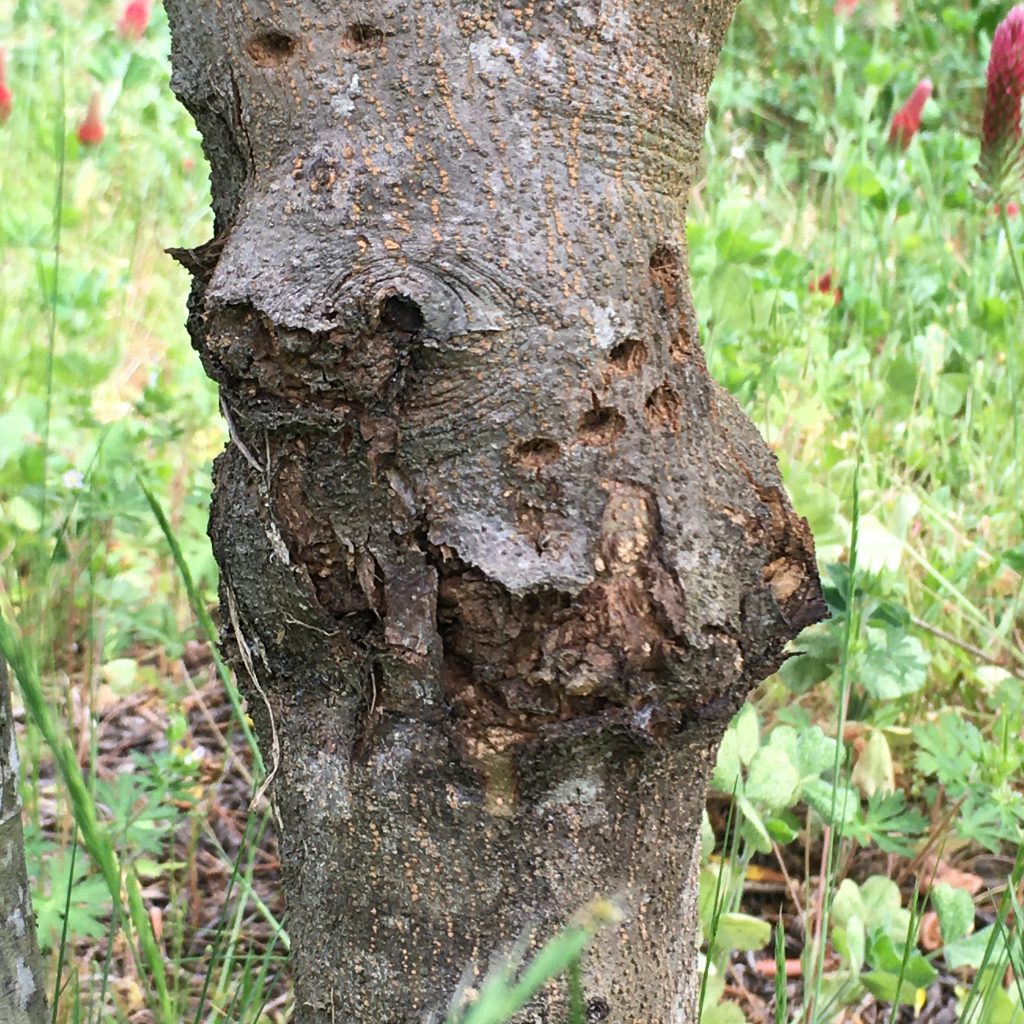There are many species of clearwing moths that affect various fruit and ornamental trees. The most common species in the southeast is the peachtree borer. However, another species of clearwing moth causes damage to olive trees. The larval stage of these species mainly cause damage to young trees. Larvae bore into the roots and lower trunk portion of their host trees and feed on the inner bark. In some cases, smaller trees are completely girdled. This damage slows the development of the orchard and reduces yield and infected trees may eventually die.

Clearwing moth damage on a young olive tree. Photo Credit: James Miles, Alabama Cooperative Extension Service.
–
Unlike most moths (active at night), adult clearwing moths fly during the day and resemble wasps. They are about an inch in length and have a wingspan of about one and a quarter inches. For most species, the adult females are larger and more colorful than the adult males. Larvae are small (about an inch in length), white, hairless caterpillars that resemble skinny grubs. Adult females can lay up to 600 eggs. Larva overwinter under the tree bark and emerge in the spring/summer.
Management
Early signs of clearwing moth infestation include wilting of terminal shoots and twig dieback. Later signs include cankers and cracked bark along with sap oozing from the main trunk. This damage sometimes attracts sapsuckers. Orchards should be scouted at least quarterly for damage. Larvae should be removed by hand if found during scouting events, because limited insecticides are labeled for control. Pheromone traps can also be distributed throughout the orchard in late spring/summer to help monitor for adult clearwing moths. It is important to note that only adult males are attracted to the traps, so they are not an adequate control method. Pyrethroids such as bifenthrin are among the only products labeled for stone fruit and olives. Applications should be made in late spring/summer.
For more information on clearwing moths please visit the UC IPM website or the University of Kentucky Entomology website.
- Crops to Consider for Fall Planting - September 26, 2025
- Benefits of Manure Fertilizers and Analysis - March 21, 2025
- Mushrooms – A Crop Worth Consideration for the Back Forty - October 4, 2024

